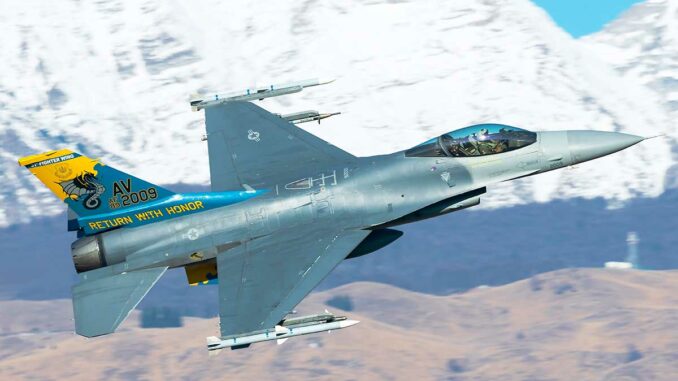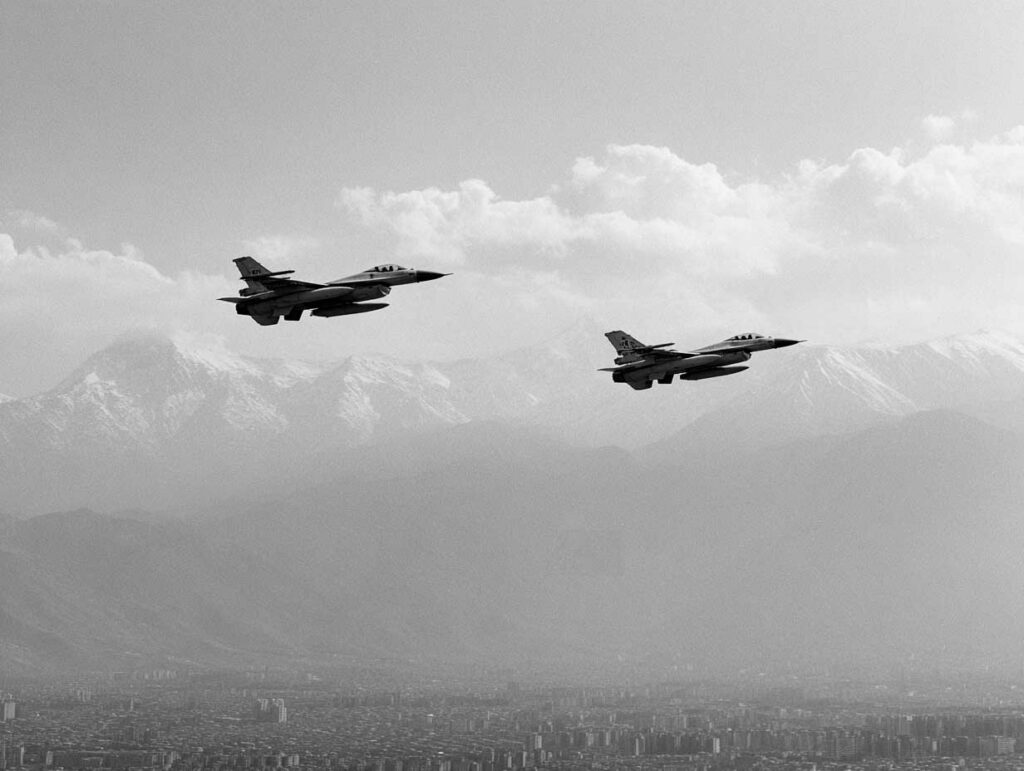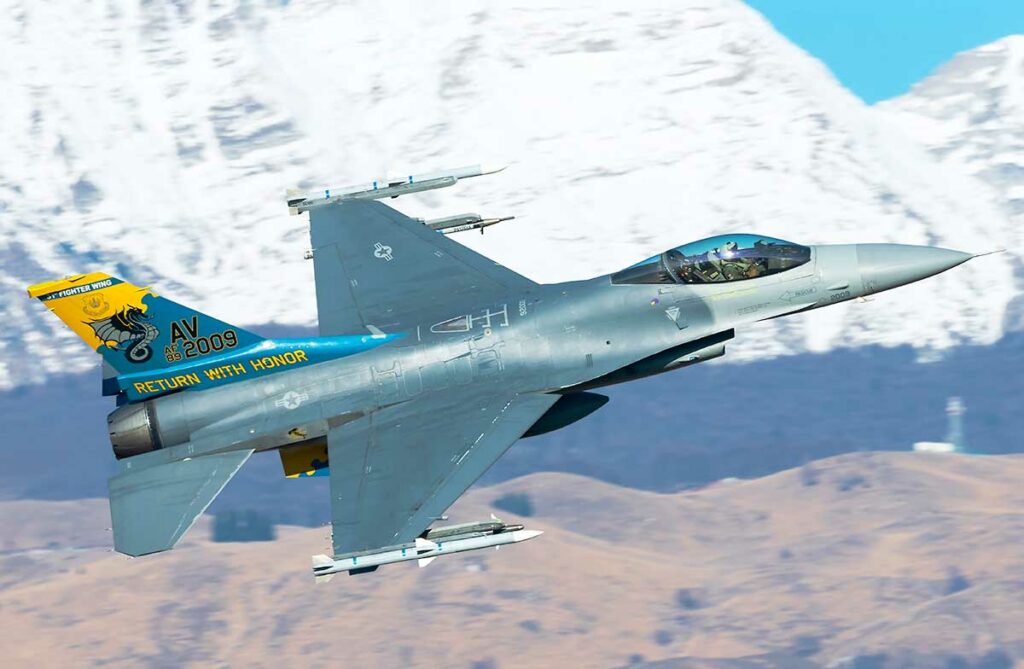
Detailed technical analysis of the US deployment of F-16, F-22, and F-35 aircraft in the Middle East on June 17, 2025.
On June 17, 2025, the Pentagon confirmed the deployment of additional combat aircraft to the Middle East: F-16s, F-22s and F-35s, accompanied by refueling aircraft and warships. This technical and factual article is intended for defense professionals. It outlines the strategic, operational, and logistical challenges of this deployment of fighter jets, in the context of growing tensions between Israel and Iran. The analysis is based on figures, air capabilities, and Washington’s real objectives. It answers the question: what are the interests and constraints of this military reinforcement? It avoids clichés and focuses resolutely on operational added value.
The deployment: technical details and capabilities
The reinforcement includes three types of combat aircraft:
- F-16 Falcon, multi-role, already operational in the area for several years.
- F-22 Raptor, a stealth air-to-air fighter designed for air superiority.
- F-35 Lightning II, stealth, multi-role, with advanced ISR (intelligence) capabilities.
According to Reuters, three Pentagon sources confirm these strictly defensive deployments, initially intended to protect US facilities and bases against Iranian drones and missiles. They specify that the jets will be used in particular to intercept UAVs and ballistic projectiles in transit.
In terms of numbers:
- A dozen F-16s have been redeployed from Europe and the US to the Gulf and the eastern Mediterranean.
- Several squadrons of F-22s have transited via RAF Lakenheath (UK), providing fallback positions before deployment to the theater of operations.
- Navy F-35s (F-35C) are embarked on aircraft carriers such as the USS Nimitz and USS Carl Vinson, reinforcing the area.
This deployment is supported by a robust logistics network:
- Approximately 30 tanker aircraft (KC-135R and KC-46A) have operated routes between Europe and the Middle East. )
- Two aircraft carriers, the USS Carl Vinson and the USS Nimitz, are now within range of strategic straits (Hormuz, Bab-el-Mandeb).

Operational challenges and doctrines
Active and intermediate protection
The main objective remains defensive: to intercept drones, cruise missiles, and ballistic missiles and protect US personnel and bases. The F-16 is used for its performance-to-price ratio, while the F-22 ensures air superiority thanks to its stealth capabilities and sensors.
Strategic flexibility
The presence of F-22s and F-35s, combined with refueling aircraft, enables rapid projection: reaching areas as far away as Iran, up to 2,000 km from the main theater. This tactical advantage relies on the ability to launch complex missions and surprise in the event of escalation.
Discreet support for Israel
The US does not intervene directly in Israeli raids, but provides air assurance: refueling or radar screens, operational in support. The Pentagon has mentioned the possibility of refueling Israeli aircraft.
Credible deterrence
Such a range of high-tech aircraft (F-22, F-35), with aircraft carriers and refuelers, forms a credible deterrent posture. The US military is signaling to Tehran that a hostile response would trigger a US reaction, even if indirect. Defense Secretary Hegseth emphasizes the deterrent role of these capabilities.
Logistical and economic costs
The implementation of such a system involves significant costs:
- Theoretical hourly rate for an F-35: ~$44,000 (≈€40,000).
- Approximately 30 refuelings per day in the area, with each refueler consuming 10,000 liters of fuel and costing $30,000 per sortie.
- Mobilization of aircraft carriers: maintenance, crews, support, i.e., several million dollars per day.
Personnel: approximately 40,000 US soldiers are already present in the region. Around this base, air deployment depends on relays from bases in the United Kingdom, Greece, Spain, and Qatar.
Risks and geopolitical implications
Iranian reactions
Tehran is threatening to retaliate against US or allied forces. Naval and air movements could trigger accidental exchanges, opening a cycle of escalation and retaliation.
Regional escalation
Military intensification creates a domino effect: Iran proxies, retaliation against bases in Iraq, Syria, and the Gulf. More active involvement could expose the US to ballistic missile strikes or drone attacks.
International reactions
France, the EU, and Russia are calling for restraint. Some European allies fear further US involvement, which could destabilize the region even more.

Tactical outlook and scenarios
Three possible scenarios:
- Maintaining a defensive posture: targeted interceptions, deterrence, no offensive strikes.
- Discreet support for Israel: refueling or electronic escort without direct engagement.
- US offensive escalation: use of B-2 or B-52 aircraft for targeted strikes on strategic Iranian sites (notably Fordow). Although B-2s are on standby, Washington has not yet committed to this option.
The US deployment on June 17, 2025, is a tactical technical adjustment, responding to a logic of active protection, strategic flexibility, and indirect support for Israel. It is part of a deliberate deterrent posture, despite high costs and risks of escalation. The Pentagon has chosen to strengthen its air capabilities while avoiding direct engagement in order to preserve the stability of its forces and send a clear message to Tehran. The next turning point will depend on Iran’s reactions and political decisions in Washington.
War Wings Daily is an independant magazine.